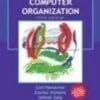No products in the cart.
Return To Shop
Menu
Categories
- Physics Books
- UPTU & AKTU Books
- Dictionaries / Language Learning
- Yoga
- Beauty and Fitness
- Text and Reference Books
- Biology Books
- Computer Science Books
- Personality Development
- Meditation
- Ayurveda / Homeopathy / Herbal Cure
- Used or Second Hand Books
- Accounting
- Children Books
- Family and Relationships
- Health & Fitness
- Crafts and Hobbies
- Mechanical Engineering Books
- Biotechnology Books
- Delhi University Books
- General
- Parenting
- Games & Quizzes
- Electrical Engineering Books
- Food Technology
- Management Books
- Biographies
- Nutrition
- Jokes - Humour
- Mathematics Books
- Hindi Books
- Best Deals: Top Selling Books
- Academic Book
- Law Books
- Class-11th Books
- Chemistry Books
- New Arrivals
- Electronics Telecom
- Class- 9th books
- Civil Engineering Books
- Medical Books
- School Books
- Environmental Engineering Books
- Electronics Communication Books
- Class- 10th class
- Free Online e-Books
- Class 12 th Books
- NCERT
- Motivational
- English Novel
- Astrology / Palmistry / Vastu / Hypnotism etc
- Competitive Examinations
- Engineering Books
- Electrical and Electronics Engineering (EEE)
- Encyclopedia
- Gift Items
- Cookery
- Economics
- Amity University ASET Books
- Alternative Therapy
- Spiritual Books
- Stress Management

Industrial Relations and Labour Laws by Arun Monappa | Buy to save >
Categories: Children Books, Electronics Telecom, Used or Second Hand Books
Backorder means you can still order but the product's availability might have to be double checked with warehouses as there are other pending orders. We will ship it to you subsequently.
visible
Industrial Relations and Labour Laws by Arun Monappa
provides a detailed overview of the essential aspects of industrial relations and labor laws. The book is a valuable resource for students and professionals who wish to understand the dynamic relationship between employers, employees, and trade unions.
The book explains the role of industrial relations in maintaining workplace harmony and addresses the importance of labor laws in regulating the rights of workers. It covers major labor statutes such as the Industrial Disputes Act and the Trade Union Act, explaining their implications and significance in protecting workers’ rights. Industrial Relations and Labour Laws by Arun Monappa also includes practical case studies and examples that demonstrate the real-world application of industrial relations and labor law principles.
Additionally, the book explores the complexities of industrial conflict and the methods used to resolve disputes, such as negotiation, mediation, and arbitration. It also highlights contemporary challenges in labor relations, including the rise of the gig economy, automation, and the growth of contract labor. The author emphasizes the importance of balancing economic objectives with social justice, ensuring that labor laws serve both the protection of workers and the overall development of the economy.
In conclusion, Industrial Relations and Labour Laws by Arun Monappa is an essential read for those interested in the field of industrial relations, offering valuable insights into the evolving landscape of labor laws and their impact on the workforce. It is an important text for students and professionals alike, providing both foundational knowledge and practical insights.
| Weight | 0.0 kg |
|---|
Related products
Akbar-Birbal Vol 3: Written In Age Specific Manner For Children by TANVIR KHAN
Organic Chemistry For Competition For IIT – JEE By O P Tandon
75 Ways to Impress Your Partner: Illustrated With One Liners On Each Page For A Quick Read by Aishwarya Kaly

Retailing Management: Text and...
₹495.00 Original price was: ₹495.00.₹358.00Current price is: ₹358.00.
More
More




